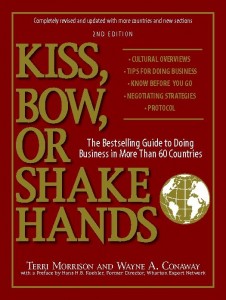As a fan of the Miami Dolphins, who were left in the lurch by Nick Saban when he left to coach at Alabama, I am not a big fan of his, to put it mildly. Yet it’s important to give credit where it is due, and no one can say the man can’t coach college football, having won 3 of the last 9 national titles.
A recent article in Sports Illustrated talked about the system that Saban has put in place to achieve excellence, and how his approach is spreading through college football. “Instead of talking about wins and championships, Saban speaks about the Process. In its most basic form, the Process is Saban’s term for concentrating on the steps to ensure success rather than worrying about the end result.”
As Saban says, instead of the scoreboard, focus on dominating the man across from you; Instead of the title, think about finishing that 9th rep in the weight room.
If he were coaching salespeople, he would tell you that, instead of thinking about your commission, you should think about the needs of the person you’re talking to; instead of quota, make that extra phone call. If writers: instead of dreaming about how many books you’re going to sell, focus on the page you’re writing right now. For anyone: instead of envisioning success, envision what you will do to deserve it.
The focus on process works at organizational levels, as attested by Saban’s success, but it also works at individual levels, during the actual performance on game day. As sports psychologist Jason Selk says, it’s OK to set product goals, but then we must focus our attention on process goals, because processes are the only things under our control.
I’m sure the article vastly oversimplified how the Process works, but these three elements are clearly central to its success:
Fundamentals: It’s about doing fundamental things well, not about gimmicks. Innovation is great, but if you didn’t execute with the last idea, what makes you think it will be different this time? In so many cases, execution trumps ingenuity, and ingenuity can even distract from what really matters. People are always looking for tips and tricks of the trade, when they should be focusing on really learning the trade.
People: It’s about getting the right people; the physical skills and talent need to be there, but just as important are character[1], attitude and intelligence. Find the right people, and then train them relentlessly, focusing on the smallest detail, to make sure they fit and contribute to the Process.
Clear expectations: DO YOUR JOB. This was the wording on a sign hung up by coaching great Bill Belichick when Saban worked for him. The Process requires that responsibilities and expectations are clearly defined for everyone who works in it, and then holding them—and getting them to hold themselves—strictly accountable.
The Process was summed up nicely by Jimbo Fisher, the head coach at Florida State and a former Saban assistant: “Everybody thinks it’s right here (on the field), or that it’s the X’s and O’s. That’s the last part of it.”
[1] Those familiar with Saban’s history might roll their eyes at his talking about “character”, but that points out the differences between “moral” character elements such as honesty and compassion, and “performance” character attributes such as toughness, resilience, etc.






